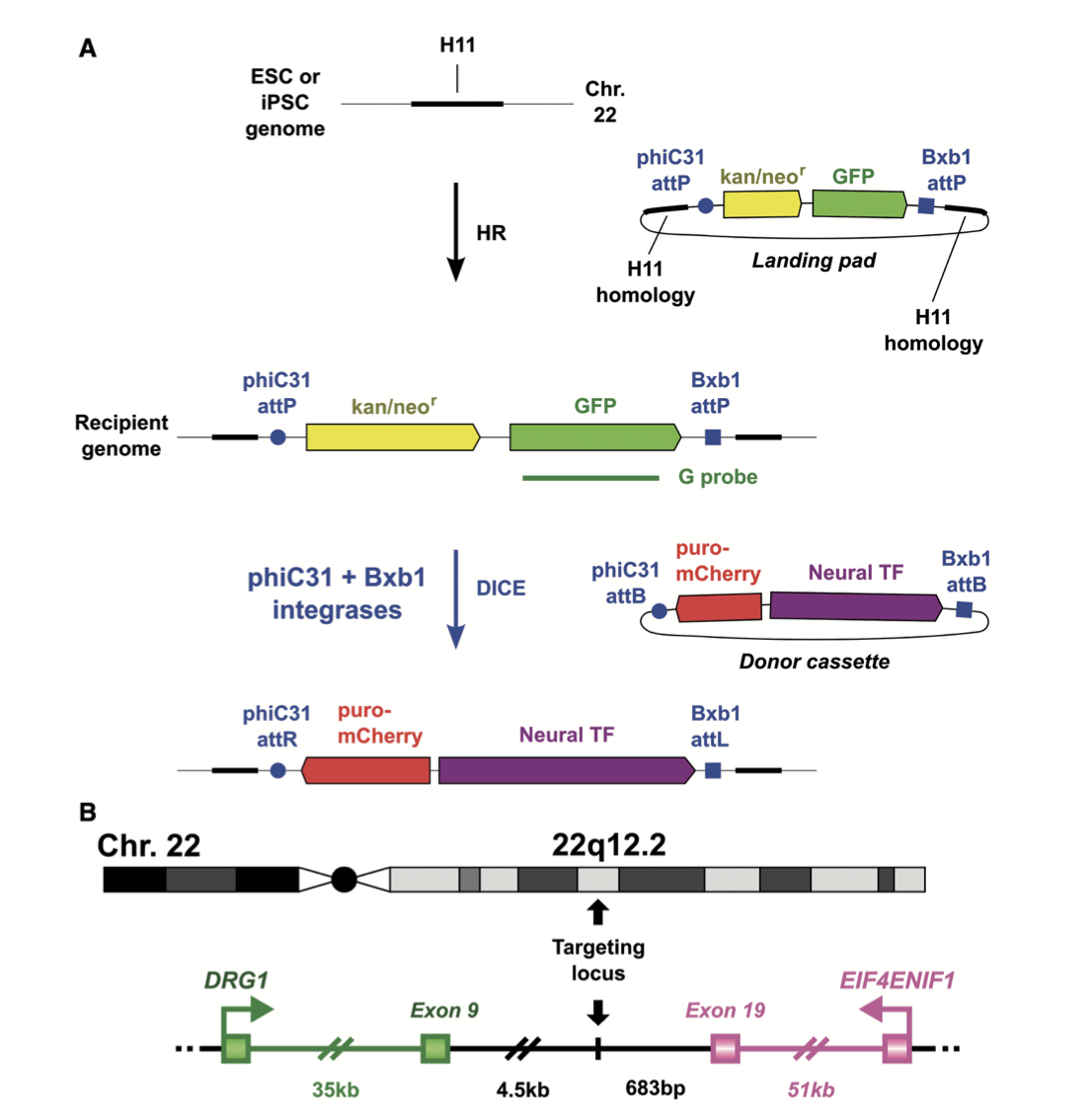Docket #: S13-057
DICE: dual-integrase cassette exchange
Stanford researchers have patented a system for precise genetic modification of human embryonic stem cells (ECSs) and induced pluripotent stem cells (iPSCs). The system known as DICE (dual integrase cassette exchange) is a robust and easily repeatable two-step process for placement of any genes into human pluripotent stem cells (see Figure: DICE Technique). DICE offers complete control over the content, orientation and copy number of gene insertion and is expected to have no size limits. The level of specificity of DICE is approximately 100 percent and correct integrants are obtained with a single transfection of a moderate number of cells. This robust system is particularly suited for construction of cell lines and transgenic organisms with potential applications in gene therapy and regenerative medicine.
Figure: DICE Technique

Figure description
DICE Technique: (A) First, a Neo-GFP landing pad is integrated into the H11 locus on chromosome 22q12.2 via homologous recombination. The G probe marks the recipient cell lines for identification by Southern blotting. (B) Next, a donor gene cassette (in this example containing neural transcription factors, puromycin resistance, and mCherry genes) is inserted at this location via DICE-mediated recombination. The H11 locus is an intergenic region flanked by the DRG1 and EIF4ENIF1 genes, ensuring minimal disruption to nearby genes. (image courtesy: the Schuele Lab)
Stage of Development
Prototype
Applications
- Genetic engineering
- Gene addition in animal, plant, and microbial cells
- Construction of transgenic organisms
Advantages
- Precise, efficient method for inserting genes at a preselected genomic location without a size limit
- Eliminates background events
- Little or no screening required
- Cost effective
- Time saving
Publications
- Zhu, F., Gamboa, M., Farruggio, A. P., Hippenmeyer, S., Tasic, B., Schüle, B., Chen-Tsai, Y., & Calos, M. P. (2014). DICE, an efficient system for iterative genomic editing in human pluripotent stem cells. Nucleic acids research, 42(5), e34-e34.
Related Links
Patents
- Published Application: 20150140665
- Published Application: WO2015073703
- Issued: 9,932,607 (USA)
Similar Technologies
-
Direct Conversion of Somatic Cells Into Neurons S09-376Direct Conversion of Somatic Cells Into Neurons
-
Efficient generation of hematopoietic stem cell (HSC)-like cells from human pluripotent stem cells: a platform to create blood and immune cells S23-246Efficient generation of hematopoietic stem cell (HSC)-like cells from human pluripotent stem cells: a platform to create blood and immune cells
-
Coupling of Excitation and Neurogenesis in Neural Stem/Progenitor Cells S01-094Coupling of Excitation and Neurogenesis in Neural Stem/Progenitor Cells